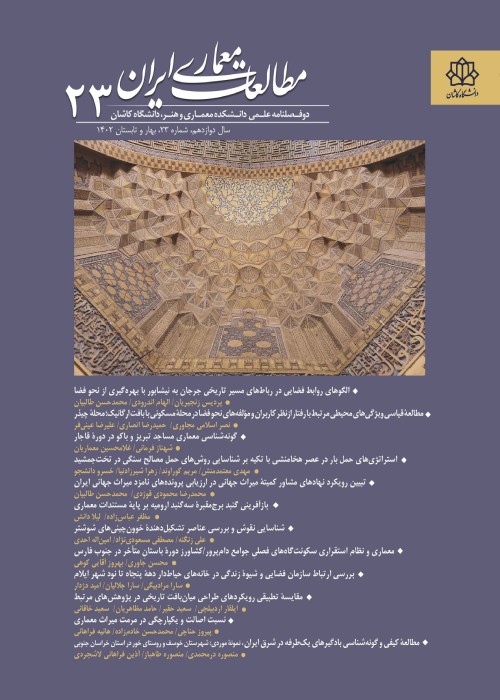Oudlajan Neighborhood, An Urban Heritage between Tradition and Modernity
Author(s):
Abstract:
As one of the five neighborhoods comprising the former Tehran at seventeenth century، Oudlajan has a precious heritage. In the Qajar era (1795-1925)، Oudlajan had the largest population of Tehran and different social classes، including noble families lived there. However، due to subsequent expansion of Tehran as well as formation of new neighborhoods in the 1960s، the process of population movement began in Oudlajan neighborhood. Original inhabitants of Oudlajan moved to new neighborhoods and dedicated their place to low-income classes particularly immigrants and workers. Bazaar، as a strong economic and political parameter، dominated the neighborhood. As a result، a significant proportion of residential buildings converted to bazaar-related spaces such as business units، workshops and warehouses and the neighborhood largely lost its residential function. So this neighborhood began to decline in all urban، economic and social fields. Since 1970s، several plans have been proposed to revitalize this neighborhood، but none of them has actually been implemented. The aim of this research in to recognize the obstacles of revitalization of Oudlajan. Descriptive analytical method has been used for thus research. The data have been collected through semi-structured interviews with citizens، residents and users of Odlajan neighborhood and through observation and review of secondary data (existing reports، statistics، books، articles، etc.). The results of this study show a lack of interest in heritage and historic spaces and a desire for modernization. It can be concluded that the obstacles of rehabilitation of neighborhoods Odlajan more than economic، technical and political، are cultural and social. In other words، the representation of heritage in this neighborhood is strongly influenced by the thoughts and ideological trends. The desire to “change”، which has long existed in Iran، was accompanied by the rejection of tradition and history، destroying everything that is known as old. For the revitalization an historic neighborhood، it is essential to establish a link between heritage and its social environment. Encouraging the participation of local communities in the development and implementation of projects for historic districts is an effective tool for success. But it first requires training، information and awareness. This awareness is a long-term process that requires interdepartmental cooperation to sensitize society towards the urban heritage.
Keywords:
Language:
Persian
Published:
Journal of Iranian Architecture Studies, Volume:4 Issue: 7, 2015
Page:
19
magiran.com/p1440644
دانلود و مطالعه متن این مقاله با یکی از روشهای زیر امکان پذیر است:
اشتراک شخصی
با عضویت و پرداخت آنلاین حق اشتراک یکساله به مبلغ 1,390,000ريال میتوانید 70 عنوان مطلب دانلود کنید!
اشتراک سازمانی
به کتابخانه دانشگاه یا محل کار خود پیشنهاد کنید تا اشتراک سازمانی این پایگاه را برای دسترسی نامحدود همه کاربران به متن مطالب تهیه نمایند!
توجه!
- حق عضویت دریافتی صرف حمایت از نشریات عضو و نگهداری، تکمیل و توسعه مگیران میشود.
- پرداخت حق اشتراک و دانلود مقالات اجازه بازنشر آن در سایر رسانههای چاپی و دیجیتال را به کاربر نمیدهد.
In order to view content subscription is required
Personal subscription
Subscribe magiran.com for 70 € euros via PayPal and download 70 articles during a year.
Organization subscription
Please contact us to subscribe your university or library for unlimited access!


